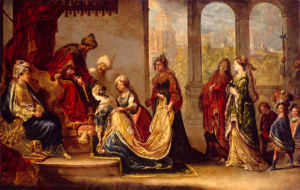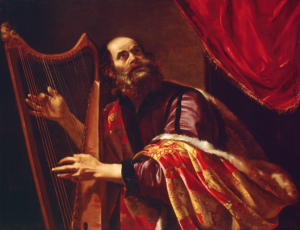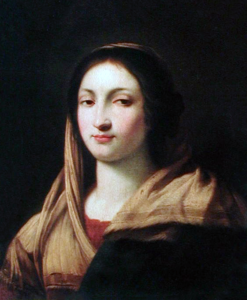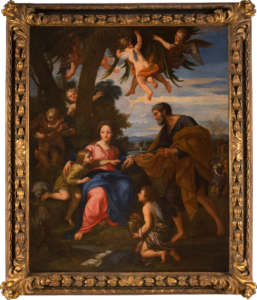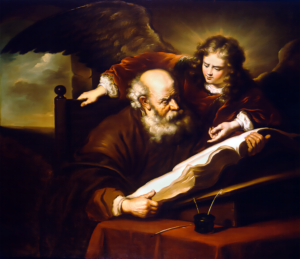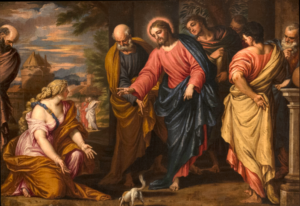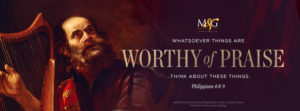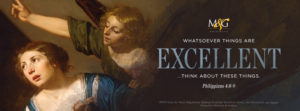Esther before Ahasuerus
Oil on canvas, c. 1624
Claude Vignon
French, 1593–1670
Vibrant reds. Golden yellows. Burnt oranges. These colors typically signal the arrival of autumn, but French artist, Claude Vignon, used them to bring to life a scene in the story of Esther. Vignon was born in Tours, France on May 19, 1593, to a wealthy family. His father served as a valet to King Henry IV of France. Claude’s earliest training was probably in Paris in the workshop of Georges Lallemand where he learned the mannerist style. He eventually traveled to and spent time in both Italy and Spain. These travels exposed him to the works of the great artists Caravaggio, Guercino, Reni, and Caracci. He also joined the French community of painters in Italy who followed Caravaggio such as Simon Vouet and Valentin de Boulogne.
Upon returning to France, he became a member of the Painter’s Guild in Paris and received patronage from King Louis XIII and Cardinal Richelieu. This patronage boosted his career and earned him respect and success as an artist. He also dabbled in printmaking, etching, and illustration as well as working as an art dealer and art expert for notable clients including Marie de’Medici. His work in a variety of mediums as well as his art expertise earned him admission into the French Royal Academy of Painting and Sculpture in 1651. Three of his children continued his legacy studying in his workshop: Claude-François, Philippe, and his daughter, Charlotte (who focused solely on still life and was also admitted to the Academy). His eclectic work demonstrates a wide array of influences such as mannerism, Venetian, Dutch, and German making it difficult to describe or define his style.
In 1624, Vignon painted Solomon and the Queen of Sheba now in the Louvre. This painting bears a striking resemblance to M&G’s Esther before Ahasuerus. The common compositions feature a king on a richly embellished throne to the far left of the painting. In the center, a beautifully adorned queen approaches the throne. Behind the queen and off to the right are several servants, guards, and pages. Vignon used this composition numerous times for various paintings including both M&G’s and the Louvre’s as well as Saint Catherine Refusing to Sacrifice to Idols, and his Adoration of the Magi (though in this painting, he reverses the scene by placing the infant king on the far right side of the painting). It is likely that Esther before Ahasuerus was also painted around 1624.
The scene depicted here by Vignon comes from the fifth chapter of the book of Esther. Through a series of events outlined at the beginning of the book, Esther, a Jewess, is selected by King Ahasuerus to be the new queen of Persia. The name Esther means “hidden or concealed” and is fitting as her cousin Mordecai advised her to keep her background secret. One of the king’s officials, Haman, hated the Jews and deceived Ahasuerus into ordering the annihilation of the Jewish people in the Persian empire which would include Queen Esther. Mordecai pleaded with Esther to go to the king to plead for mercy. However, Esther was afraid. In Persian culture, to appear before the king without being summoned could mean death unless the king held out his golden scepter. After much prayer and fasting, Esther chose to risk her life to save her people from destruction.
Vignon captures the moment where Esther humbly and courageously kneels before the king. The king in turn holds out his scepter to Esther granting his favor. Vignon’s use of vibrant, heavily saturated colors shows his Venetian influence. He excelled at painting textiles, gold and precious stones which are abundant throughout this work in which the gold especially glimmers off the canvas. The clothing he used in the scene displays 17th-century European fashion rather than 4th-century Persian garments. Vignon’s color palette and brushstrokes reveal the intensity of this pivotal moment in Esther’s life. To find out how the story ends, read Jan Victors’ Esther Accusing Haman.
Rebekah Cobb, M&G Registrar
Published 2022
